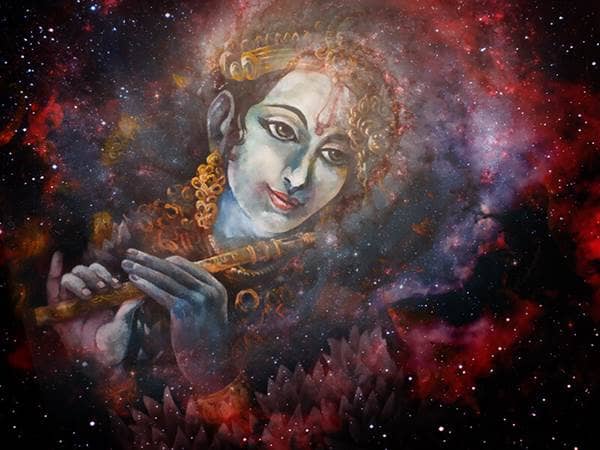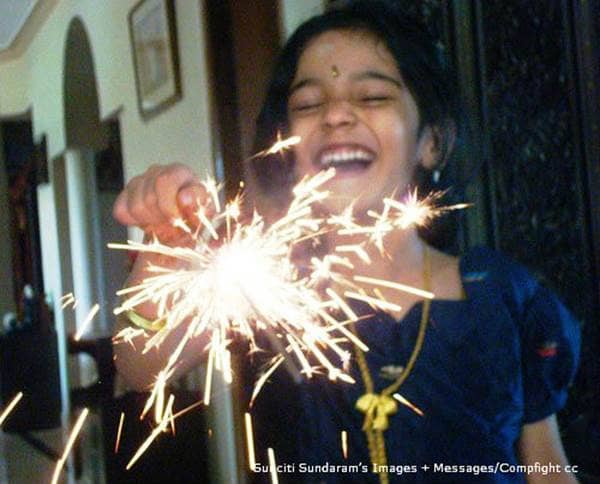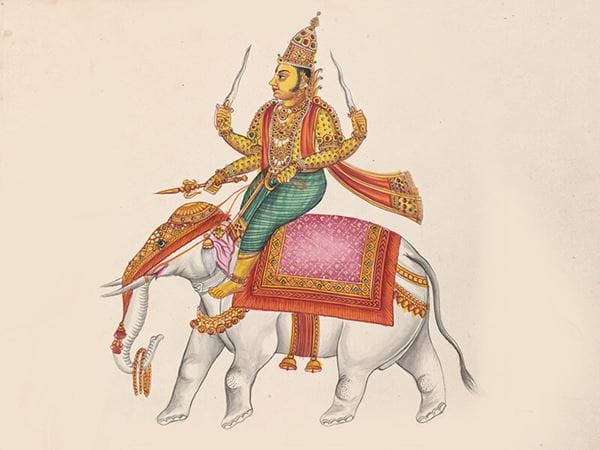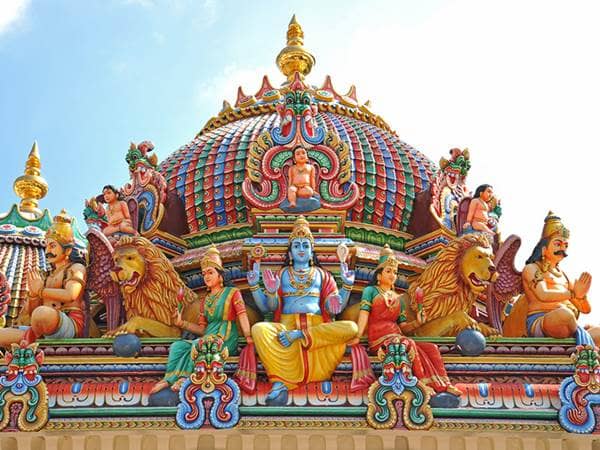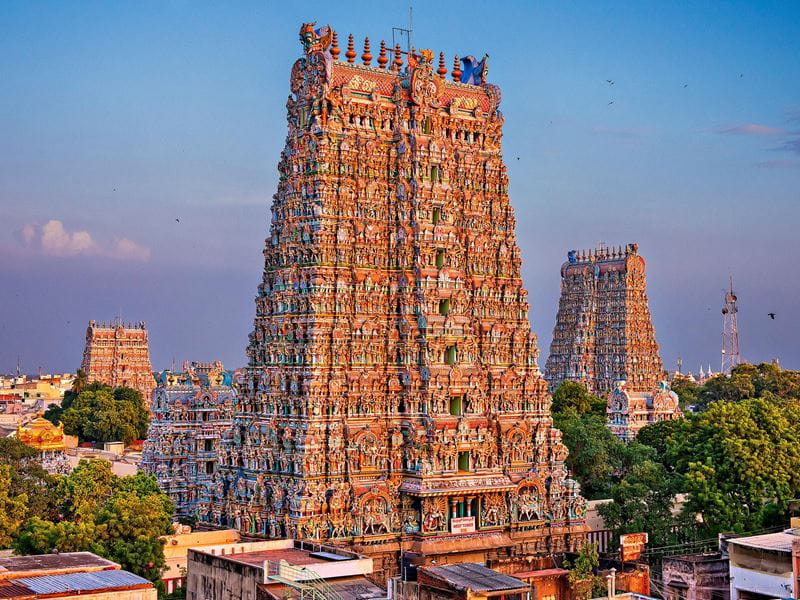
- Trending:
- Pope Leo Xiv
- |
- Israel
- |
- Trump
- |
- Social Justice
- |
- Peace
- |
- Love
The 100 Most Holy Places On Earth
Meenakshi Amman Temple

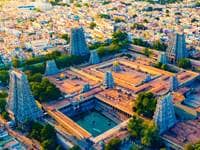
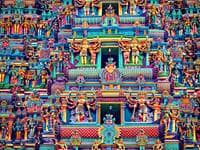
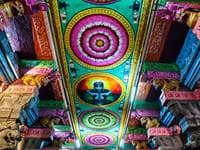
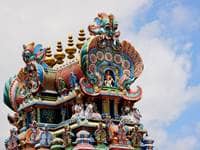
Associated Faiths:
Accessibility:
Open to visitors.
Annual Visitors: 6,000,000
History
The Meenakshi Temple complex, often referred to as the Arulmigu Meenakshi Sundaraswarar Temple, is a late-12th century temple development built by the Pandayan Emperor, Sadayavarman Kulasekaran I. It is one of the 51 Shakti Peethas, meaning the shrines dedicated to Shaktism (or Hindu goddess worship). This temple is dedicated to Shiva and Meenakshi (who is the sister of Vishnu and wife of Shiva). Indeed, one of the most famous of the many carved scenes in the temple is the wedding of Meenakshi to Shiva (found on the east side, over the main entrance to the temple complex). The scene not only depicts the bride and groom, but also Meenakshi’s brother, Vishnu, giving her away to the Shiva.
Early Hindu texts suggest that an earlier temple once sat on this same spot (at least as early as the mid-6th century CE), but those same texts do not indicate that it was dedicated to Meenakshi and Shivah. It is attributed to various gods, including Aalavaai Iraivan, Angayar Kanni Ammai, Indra, etc. Thus, the current 12th century structure is not the original temple, nor are its patron gods the same as those of the original edifice.
Early, in the 14th century, Muslim armies invaded the north of India, and the temples—which were a rich source of precious stones and valued metals—were looted and destroyed. It is believed that this same invasion was the cause of significant damage to the original temple that once occupied this spot. In the 16th and 17th centuries, the temple was reconstructed, and the design changed, as were the deities to whom it was dedicated.
One of the most prominent features of this particular temple is its twelve gopurams—or ornate and monumental entrance towers. Because of the intricate carvings on these, the Meenakshi Temple’s gopurams are among the most famous in India. Of the twelve, three stand out. The tallest is the southernmost tower, reaching some 169 feet into the sky. It has more than 1,500 carvings on it. Second only in height would be the westernmost tower, coming in at 154 feet. It has 1,124 sculptures or carvings on it. Finally, the north tower is 152 feet tall, and has 404 sculptures covering its surface.
Religious Significance
As a goddess, Meenakshi is the primary deity of the Arulmigu Meenakshi Sundaraswarar Temple complex. This is unusual, since most southern Indian temples that are connected to Shiva (or “Sundaraswarar,” as he is called here) focus on him as the primary deity of the temple. Meenakshi is so clearly the focus that the temple has two shrines—one for Meenakshi and one for her husband; but hers is on the north side, which is considered the pradhana mutri (or the “more important” side of the temple). Thus, her placement highlights her preeminence in comparison to Shiva (or “Sundaraswarar”)—at least at this specific shrine.
The term “shakti” is said to mean “power” or the “enabling” of a god’s power. In Hinduism, a male deity’s power is often depicted in his female consorts—who “enable” or “empower” him. Accordingly, in the south of India, female deities are the ones with the “penultimate powers.” They are the ones who determine the strength and effectiveness of their more famous husbands. It is in them that the fate of a kingdom or ruler ultimately rests. Thus, this likely explains why this temple, dedicated to both Shiva and Meenakshi, places her in the position of higher importance.
In addition to Meenakshi and Shiva, idols of nearly 100 other deities or Hindu saints are found enshrined in this temple complex. Hindus are typically quite comfortable with the idea that a temple is dedicated to a specific deity, but other deities may be worshipped therein. The majority of Hindu temples will, like the Meenakshi Temple, house idols of many gods and goddesses—even when the temple is dedicated to a specific god.
Of course, temples are always designed as a form of sacred space. There is a sense of reverence among genuine practitioners who visit shrines such as this. And most faith-filled Hindus feel that deities are more accessible through participating in darshan (or “viewing” of the idol) at a shrine—whether that is a public shrine (such as this temple) or at a home shrine, so common in Hindu homes.
All of that being said, the Meenakshi Temple is significant in the message it sends. In the majority of religious traditions, the gods are male—and it is the men who dominate society as well. However, in a temple such as this, where shakti or a goddess is preeminent, the temple seems to make a cultural and theological statement in this era of feminism. Hindus have a concept called “sumangali,” which means a married woman, but is often used to refer to the “auspicious married women.” She is the women who has a husband, but yet feels independent of his control or patriarchy. She is an organizer of their lives, their home, their social interactions, and is traditionally seen as a woman of great “power” (i.e., shakti). Consequently, the model of Meenakshi and Shiva (in the Arulmigu Meenakshi Sundaraswarar Temple complex) seems to send a message to feminist Hindus that female deities like Meenakshi can be a source of power in the universe but, by default, so can the women who worship therein.



